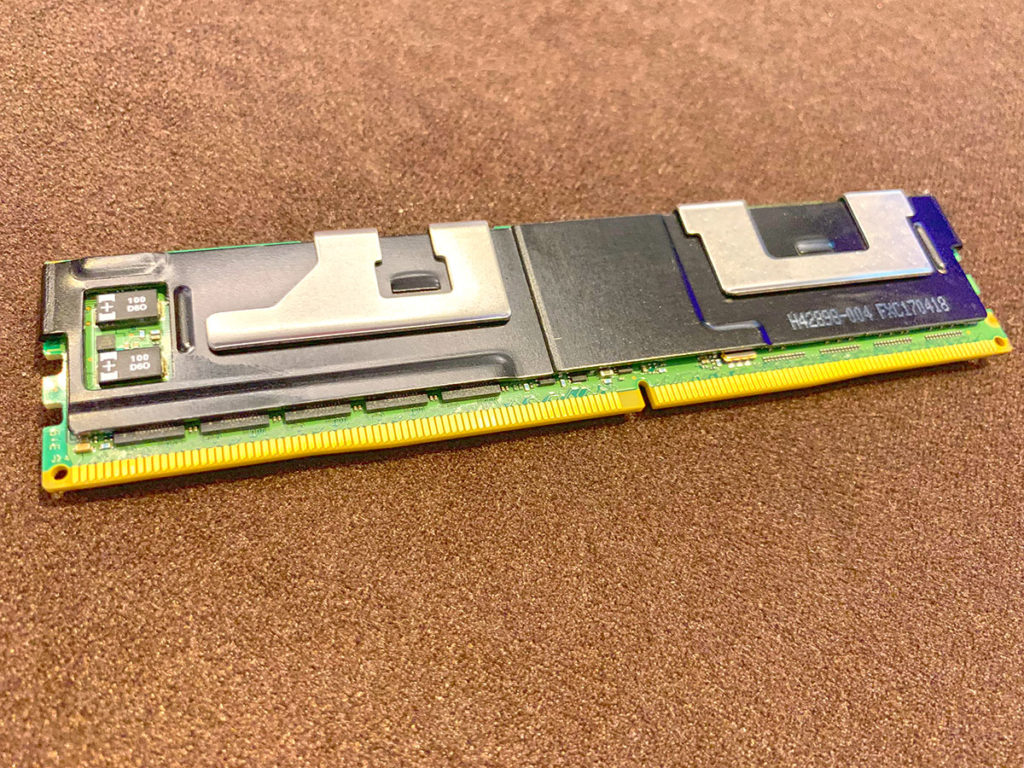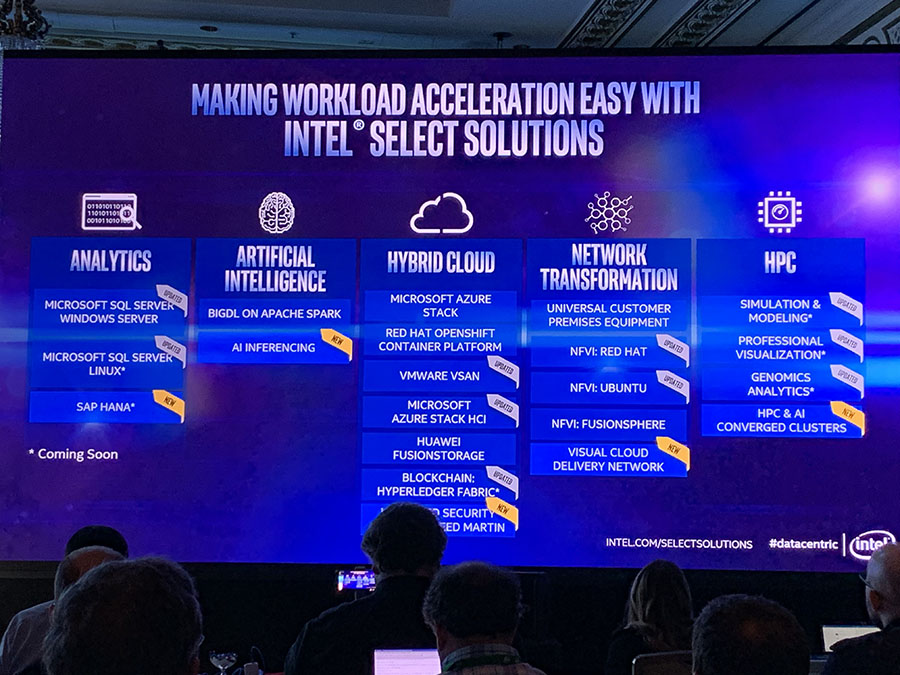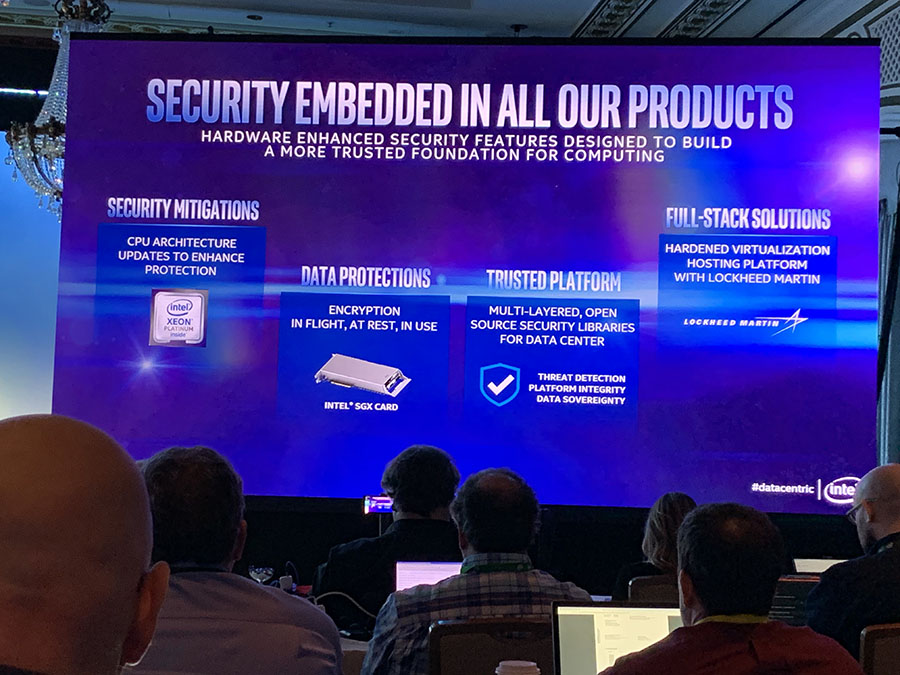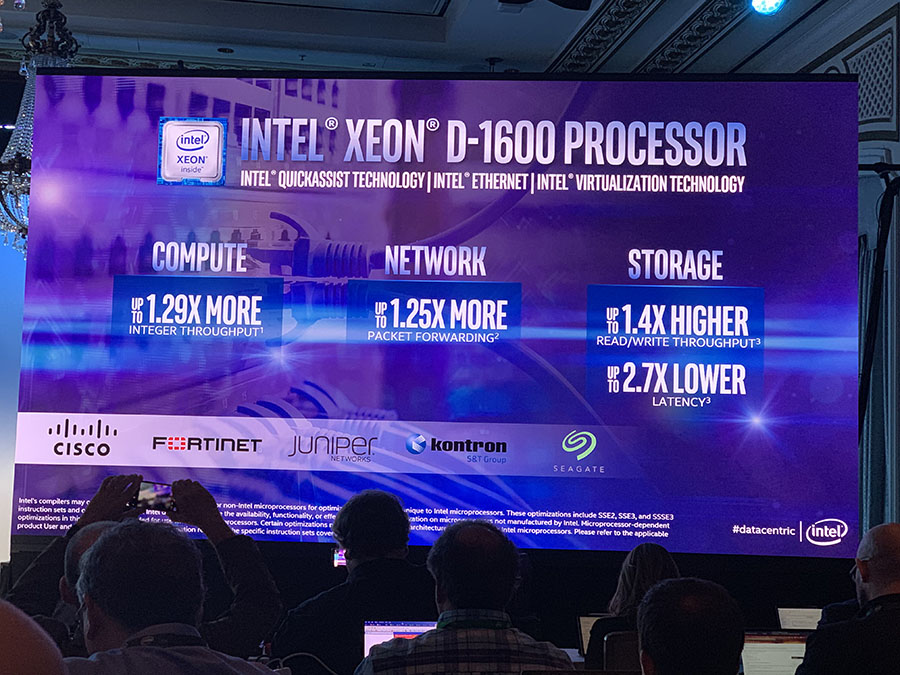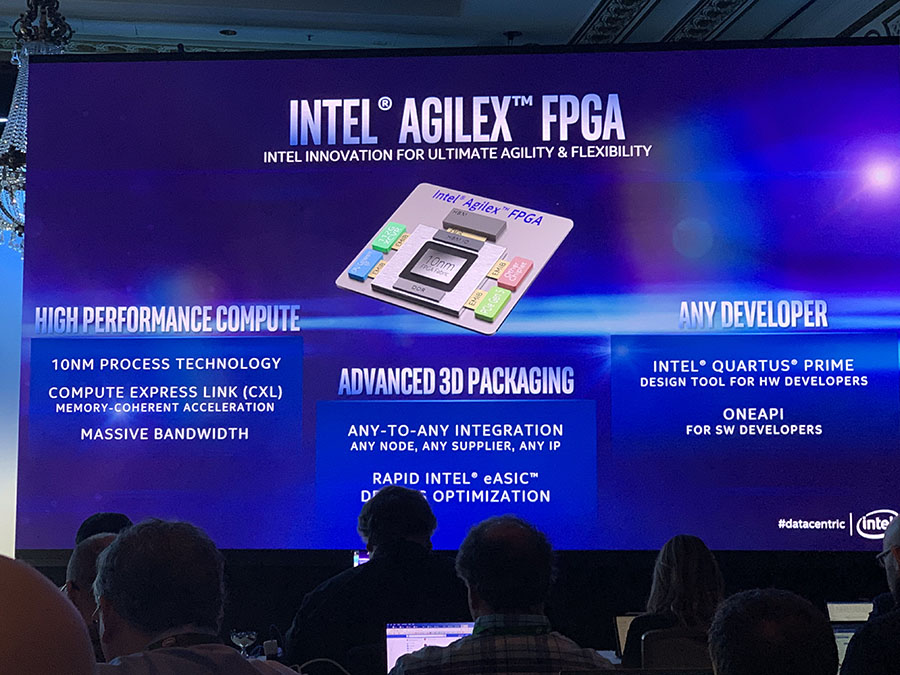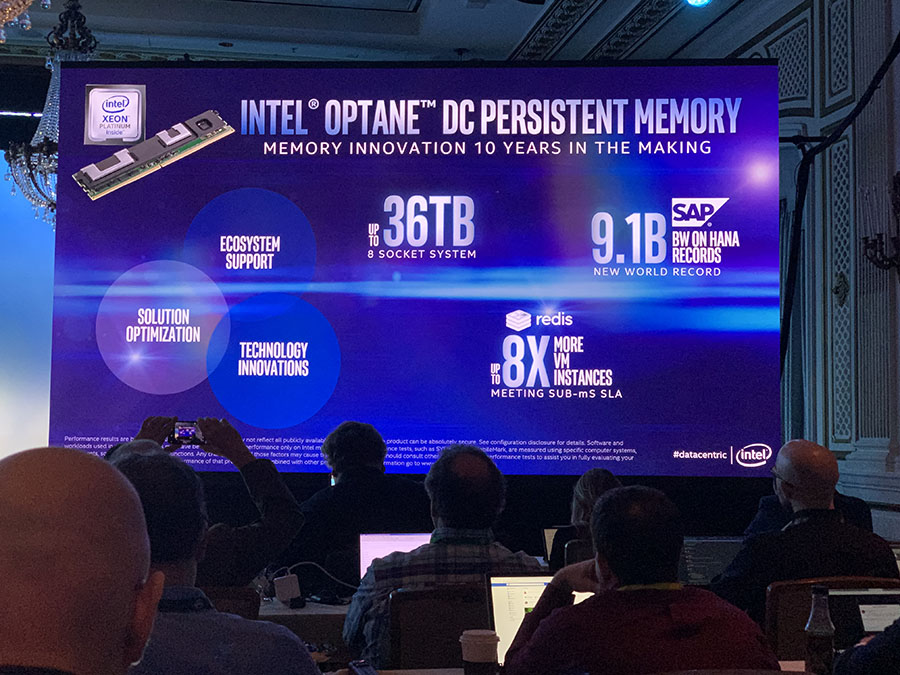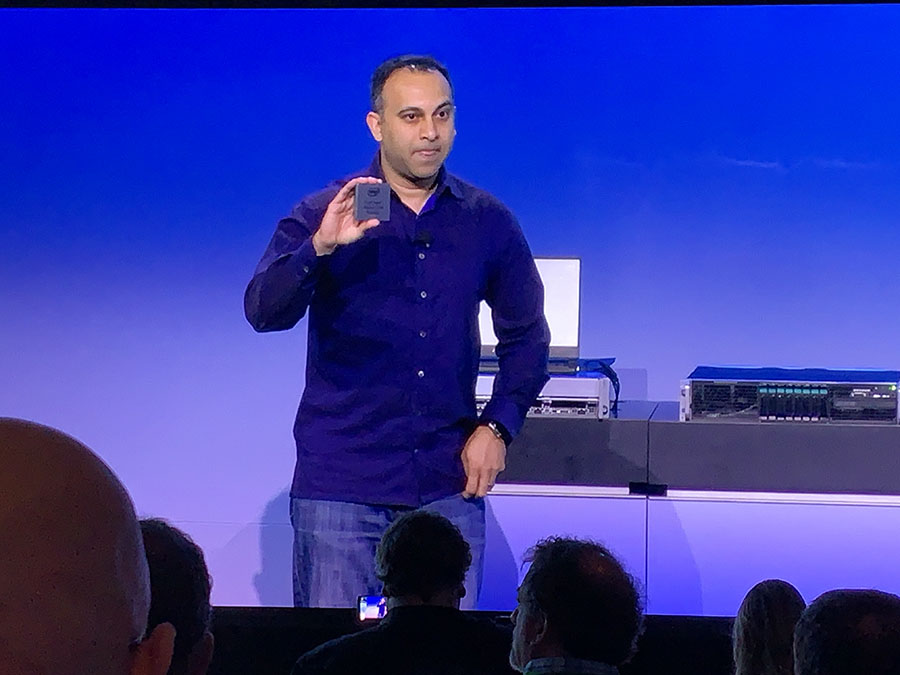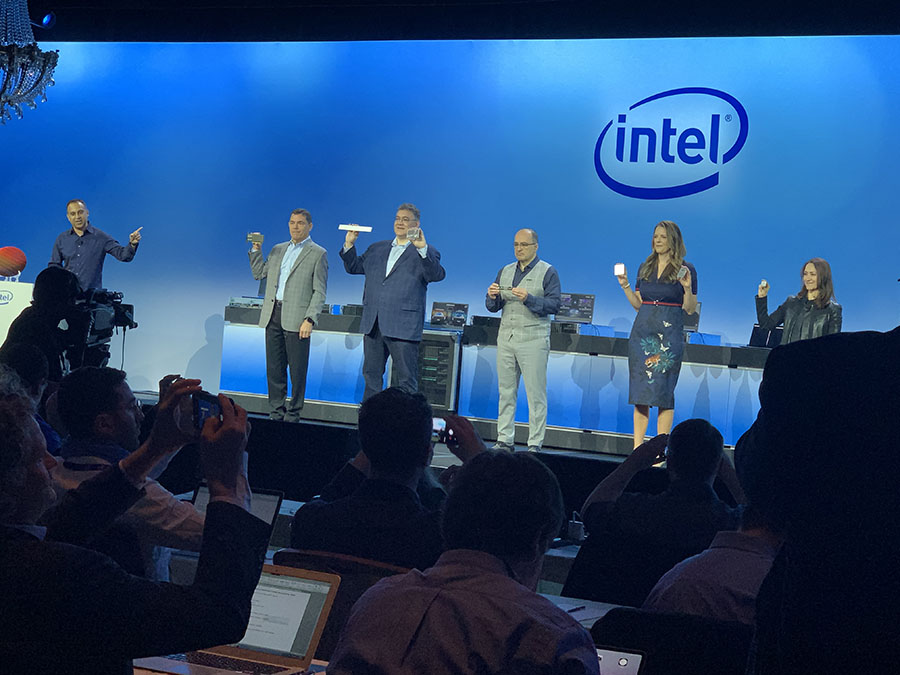Intel Announces Cascade Lake Xeon, Optane DC Persistent, Ethernet 800, and More at Data Centric Innovation Day
As a part of the Tech Field Day team, we were part of the Intel Data-Centric Innovation Day in San Francisco, CA. Here, we were treated to Intel’s next generation of products to speed up the data center, give us low latency, and ultimately pass it through the network more securely.
During the event, Intel announced seven new technologies that will shape 2019 and beyond.
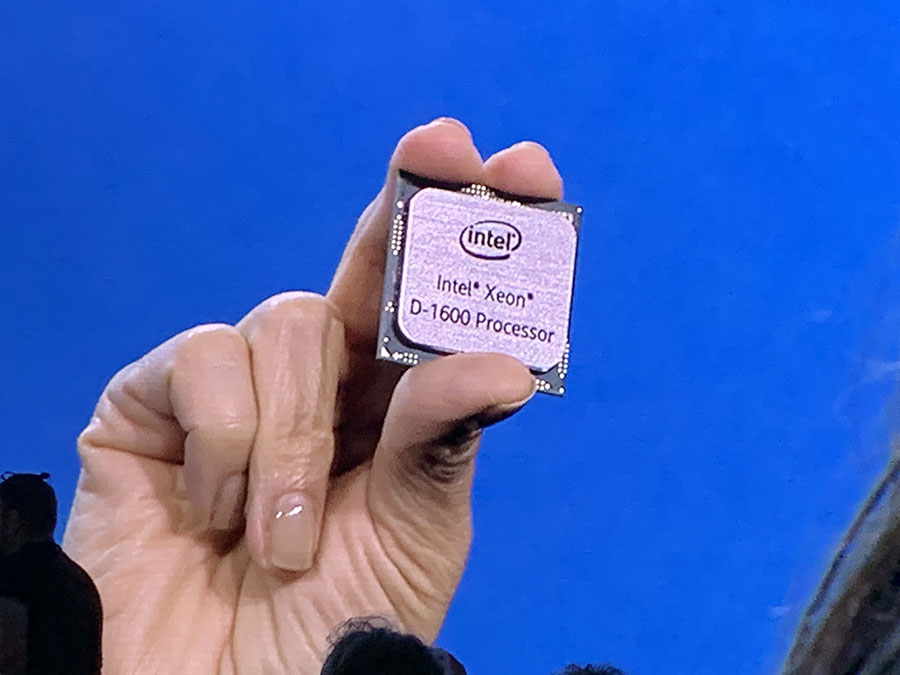
Intel Cascade Lake Xeon D-1600 to 9200 Processor
The Intel Xeon processor series just brought out up to 56 cores of processing power, with a newly rebuilt integrated memory controller. Over 50 SKUs, 4.5TB memory per socket with 1 to 8 sockets. The D-1600, the scalable 8200, and 9200 processors with Intel AGILEX FPGA. A demonstration to show the power of the floating point rate beat out the current record (282 fp_rate) with 522 fp_rate.
No doubt this new processor set can perform, but it’s more than just the processor that makes 2019 pretty exciting.
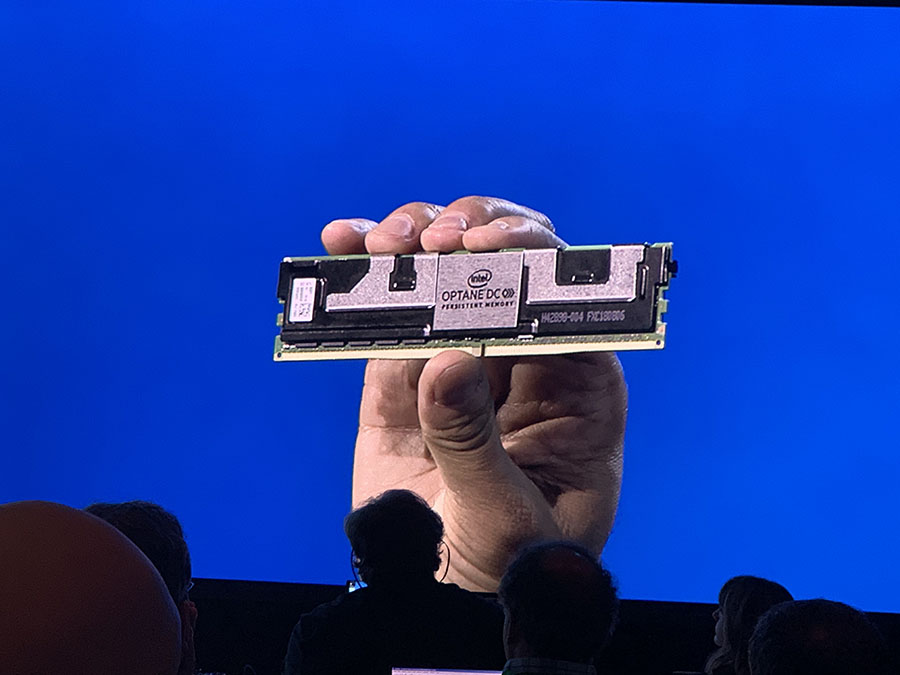
Optane DC Persistent Memory
Next up, a 2nd generation Optane upgrade that introduces a new hierarchy between cache and memory. Intel Optane DC Persistent memory can run up to 36TB on a 8 socket system, and up to 8 times more VM instances.
The Optane DC persistent memory layer works between DRAM, and Optane DC, to allow the NAND SSD and HDD/Tape to do what they need to do.
The new DIMMs will use 3D XPoint memory, which is non-volitile memory.
These DIMMs can use a standard DDR4 slot, but will be able to offer 128GB, 256GB, and 512GB modules. With 256 bit Encryption, and a re-generated key by the DIMM itself, data through the DIMM system is protected.
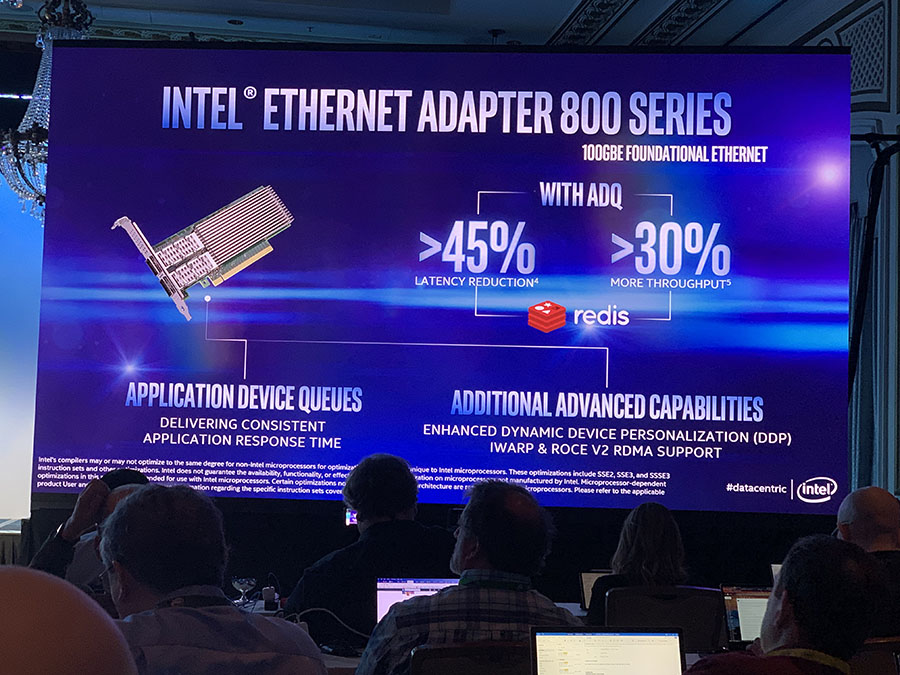
Intel Ethernet Adapter 800 Series
Intel is organizing data better with the new Ethernet 800 series NIC. Consistent application response time, with 100GBE foundation.
The series will be able to create direct connections with certain applications. Think of it like an express lane on a highway, and smart cars that talk with each other. Since you know where the data is going, no collisions can happen.
Features include Virtual Function Driver, Application Device Queues, and Dynamic Device Personalization.
The end result is a 50% predictablility increase, 45% Latency reduction, and 30% throughput improvement, when benchmarked using Redis.

Tech Field Day Deep Dive at Intel Data-Centric
Of course, we were there with Tech Field Day, so after the keynote, we got a deeper dive in what was explained at the event. Our panel of experts in multiple fields of technology ask questions, and get the best answers to these new products.
The overall focus was faster processing, better control of memory, low latency delivery, and security of your data. It also means you can find your cat photos easier, get a more consistent stream of your favorite sports team, and allow you to work simultaneous.

